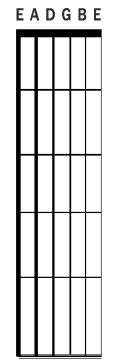

Below you will find a printable diagram and clear explanation of how to get in tune!
To begin you will either tighten or loosen the 6th string on the guitar to arrive at a basic low sounding pitch that is close to E.
You will then adjust (tune) the
remaining 5 strings on your guitar relative to the 6th string. You want to
be sure that the 6th string is fairly in pitch. If you have an electronic
tuner then you can be certain that you are on true pitch for E.
Now follow the diagrams below to learn how to tune each subsequent string.
E-----1st String(thin)----------------------------------------
B---------2nd String------------------------------------------
G-------------3rd String--------------------------------------
D------------------4th String---------------------------------
A----------------------5th String-----------------------------
E----------------------------6th String(thick)----------------
|
This is really
easy once you get the hang of it! Now you will do virtually the same thing with each string only tuning the 'B' or 2nd sting will be slightly different. Next, tune your
'D' string by pressing and holding the 'A' (5th) string in the 5th fret
as shown in the second step of the diagram. Again, play both simultaneously,
tuning the 'D' string until it sounds the same as the depressed 5th
string. |
 |

Find a teacher in your area Teachers...
List for free Store
Links Home